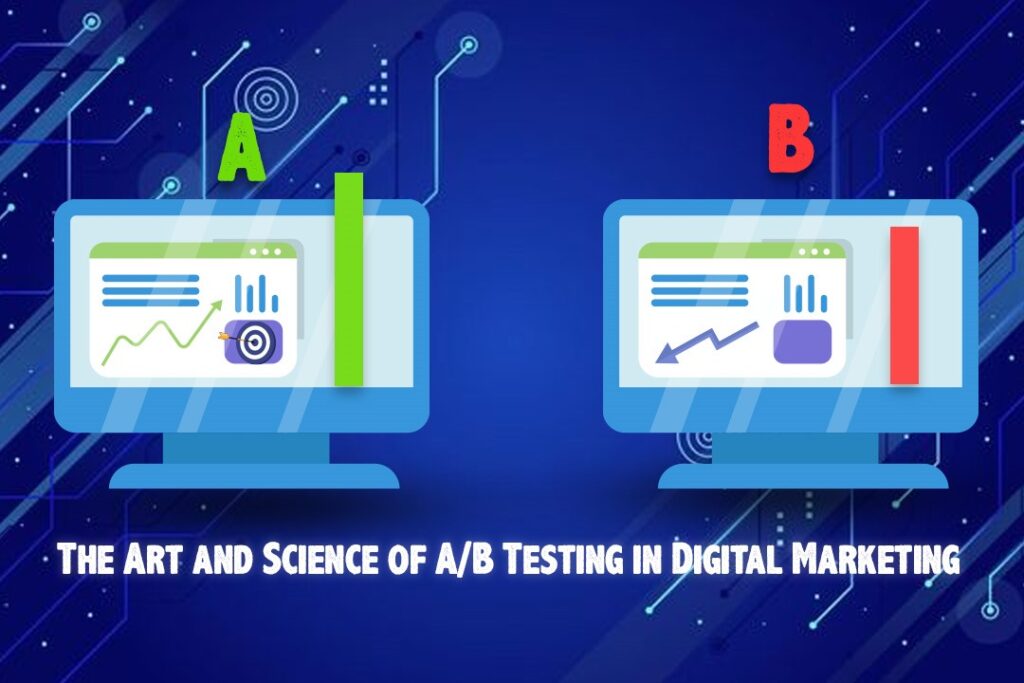
In the fast-paced realm of digital marketing, decisions based on hunches can lead to wasted resources and missed opportunities. Enter A/B testing—a fundamental technique that takes the guesswork out of advertising by relying on data to inform decisions. But what exactly is A/B testing, and why is it so crucial?
What is A/B Testing?
A/B testing, also known as split testing, is a method where two versions of a digital asset are compared to determine which one performs better. For example, if a marketer is unsure whether a red or blue call-to-action button will attract more clicks, they can create two versions of an ad: one with a red button (Version A) and one with a blue button (Version B). By showing these versions to different audience segments, they can measure which color leads to more clicks.
Why A/B Testing Matters in Advertising
A/B testing is not just a theoretical concept; it’s a proven strategy that drives real results. According to a study by Optimizely, companies that use A/B testing see an average increase in conversion rates by up to 30%. This is because A/B testing helps marketers make decisions based on actual user behavior rather than assumptions.
Take, for instance, a famous example from the online retailer, VWO. They tested two different versions of a checkout page: one with a simplified design and one with additional promotional offers. The simplified page resulted in a 15% increase in conversions, demonstrating that a cleaner design can sometimes lead to a more effective user experience.
How Does A/B Testing Work?
The A/B testing process is straightforward but requires careful execution:
Identify the Variable to Test: Choose a specific element to test. This could be the headline of an email, the color of a button, or the layout of a landing page. For example, Booking.com frequently runs A/B tests to determine the most effective placement of booking buttons and offers.
Create Two Versions: Develop two versions of the asset with only one difference between them. For instance, a retailer might test an ad with a headline that reads “50% Off Summer Sale” versus “Huge Summer Sale – Save 50% Now!”
Split Your Audience: Divide your audience into two groups, ensuring they are comparable in size and demographics. This helps in getting unbiased results. For instance, an online business might show Version A to 50% of their visitors and Version B to the remaining 50%.
Run the Test: Present each version to its respective group and track key performance metrics such as clicks, conversions, or engagement rates.
Analyze the Results: After gathering sufficient data, compare the performance of the two versions. Tools like Google Optimize or Adobe Target can help analyze which version performed better.
Implement the Winning Version: Use the better-performing version in your full campaign. For example, if the “Save 50% Now” headline leads to higher clicks, implement it across all similar campaigns.
Fascinating Facts and Figures
Impact of Button Color: A well-known study by HubSpot found that changing a call-to-action button color from green to red increased click-through rates by 21%. This small change made a significant impact, demonstrating the power of A/B testing.
Headline Testing: Research by Conductor revealed that headlines with numbers and data receive 36% more clicks compared to those without. Testing different headline styles can reveal which approach resonates best with your audience.
The Power of Personalization: A/B testing isn’t limited to visual elements. A study by Econsultancy found that personalized email subject lines lead to a 26% increase in open rates. Testing different personalizations can enhance email marketing efforts.
Best Practices for A/B Testing
To maximize the effectiveness of A/B testing, consider these best practices:
Test One Variable at a Time: This approach ensures that you accurately identify which change led to the difference in performance. Testing multiple variables simultaneously can obscure results.
Run Tests Simultaneously: To avoid external factors affecting the results, conduct tests at the same time. For instance, testing an ad’s effectiveness during different seasons can lead to skewed results.
Ensure a Sufficient Sample Size: A/B tests are most reliable with larger sample sizes. For instance, a sample size of at least 1,000 visitors can provide statistically significant results, reducing the chance of errors.
Conclusion
A/B testing is a blend of art and science, essential for refining digital marketing strategies. By testing hypotheses and analyzing real user data, marketers can make informed decisions that enhance performance. With proven benefits, such as a 30% increase in conversion rates and insights that can lead to more effective campaigns, A/B testing is a cornerstone of successful digital marketing. Embracing this method can lead to better engagement, increased conversions, and a more optimized advertising strategy.
If you would like to increase your conversion rates and go the A/B testing route, feel free to contact us, we would be thrilled to assist you in this endeavour!
